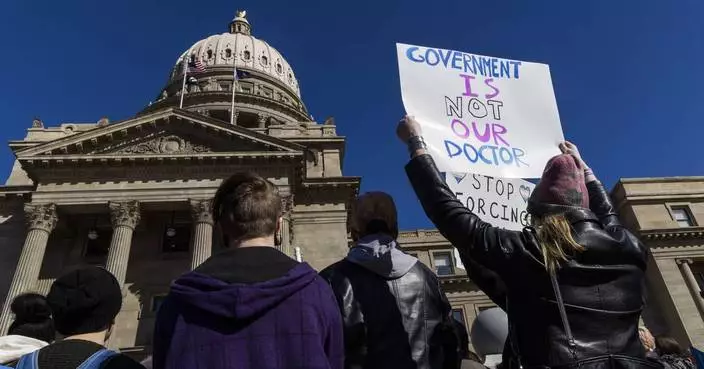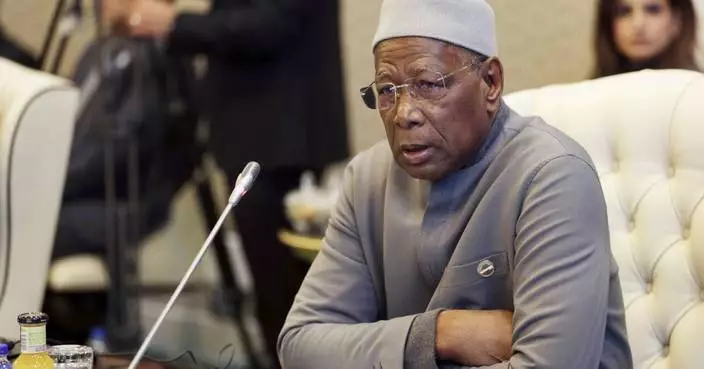An airstrike hit a detention center for migrants early Wednesday in the Libyan capital, killing at least 40 people, a health official in the country's U.N.-supported government said.
The airstrike targeting the detention center in Tripoli's Tajoura neighborhood also wounded 80 migrants, said Malek Merset, a spokesman for the health ministry. Merset posted photos of migrants who were being taken in ambulances to hospitals.
Footage circulating online and said to be from inside the migrant detention center showed blood and body parts mixed with rubble and migrants' belongings.

Libyan Red Crescent workers recover migrants bodies after an airstrike at a detention center in Tajoura, east of Tripoli Wednesday, July 3, 2019. An airstrike hit the detention center for migrants early Wednesday in the Libyan capital. (AP PhotoHazem Ahmed)
The U.N. refugee agency in Libya condemned the airstrike on the detention center, which houses 616 migrants and refugees.
The Tripoli-based government blamed the self-styled Libyan National Army, led by Khalifa Hifter, for the airstrike and called for the U.N. support mission in Libya to establish a fact-finding committee to investigate.
A spokesman for Hifter's forces did not immediately answer phone calls and messages seeking comment. Local media reported LNA had launched airstrikes against a militia camp near the detention center.
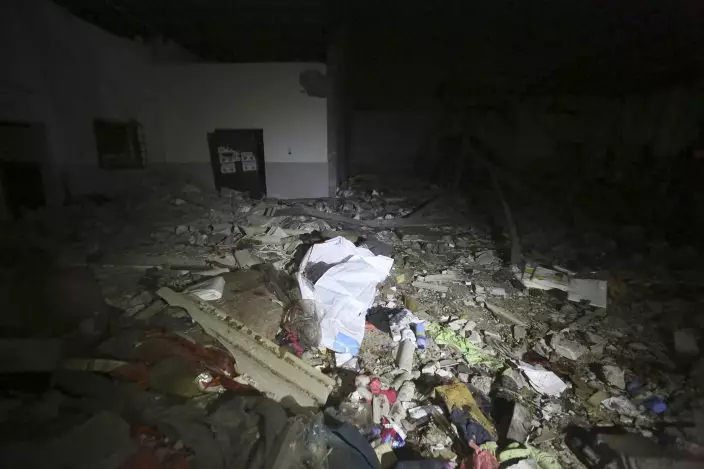
This photo shows the damages after an airstrike at a detention center in Tajoura, east of Tripoli Wednesday, July 3, 2019. An airstrike hit the detention center for migrants early Wednesday in the Libyan capital. (AP PhotoHazem Ahmed)
The LNA launched an offensive against the weak Tripoli-based government in April. Hifter's forces control much of the country's east and south but were dealt a significant blow last week when militias allied with the Tripoli government reclaimed the strategic town of Gharyan, about 100 kilometers (62 miles) from the capital. Gharyan had been a key supply route for the LNA forces.
Many camps for militias loosely allied with the U.N.-supported government are in Tajoura, east of the city center, and Hifter forces have targeted such camps with airstrikes in the past weeks. The LNA said on Monday it had begun an air campaign on rival forces in Tripoli after it lost control of Gharyan.
The fighting for Tripoli has threatened to plunge Libya into another bout of violence on the scale of the 2011 conflict that ousted longtime dictator Moammar Gadhafi and led to his death.
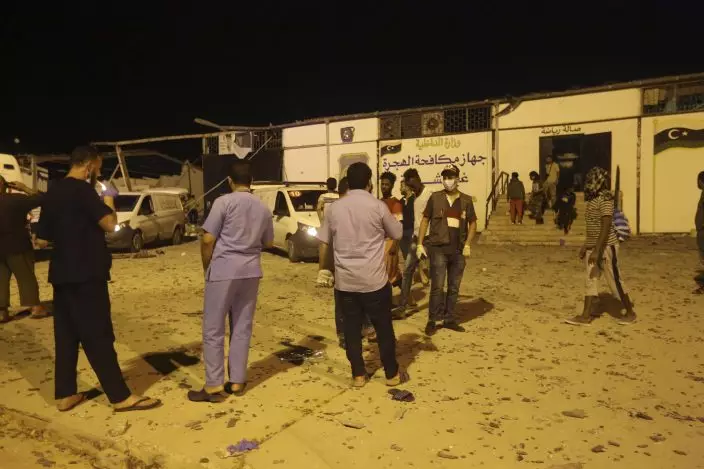
Workers gather at a detention center after an airstrike in Tajoura, east of Tripoli Wednesday, July 3, 2019. An airstrike hit the detention center for migrants early Wednesday in the Libyan capital. (AP PhotoHazem Ahmed)
Hifter says he is determined to restore stability to the North African country. He is backed by Egypt, United Arab Emirates and Saudi Arabia while his rivals, mainly Islamists, in Tripoli are supported by Turkey and Qatar.
His campaign against Islamic militants across Libya since 2014 won him growing international support from world leaders who say they are concerned that Libya has turned into a haven for armed groups, and a major conduit for migrants bound for Europe.
His opponents however view him as an aspiring autocrat and fear a return to one-man rule.
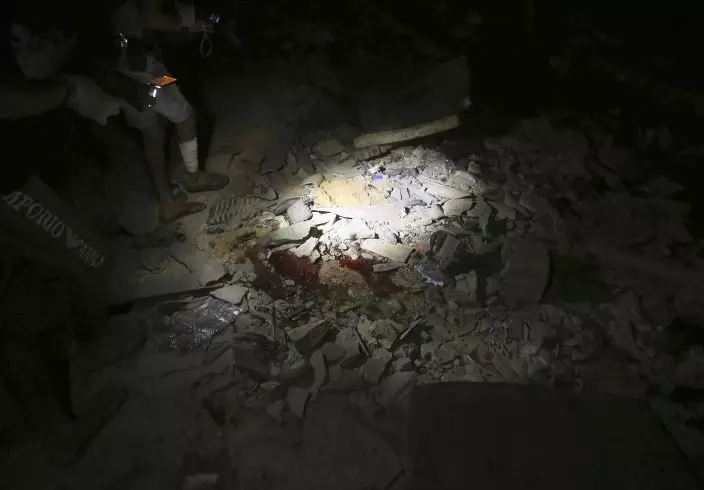
This photo shows a scene of an airstrike at a detention center in Tajoura, east of Tripoli Wednesday, July 3, 2019. An airstrike hit the detention center for migrants early Wednesday in the Libyan capital. (AP PhotoHazem Ahmed)
At least 6,000 migrants from Eritrea, Ethiopia, Somalia, Sudan and other nations are locked in dozens of detention facilities in Libya that are run by militias accused of torture and other human rights abuses. Most of the migrants were apprehended by European Union-funded and -trained Libyan coast guards while trying to cross the Mediterranean Sea into Europe.
The detention centers have limited food and other supplies for the migrants, who made often-arduous journeys at the mercy of abusive traffickers who hold them for ransom money from families back home.
The U.N. refugee agency has said that more than 3,000 migrants are in danger because they are held in detention centers close to the front lines between Hifter's forces and the militias allied with the Tripoli government.
Libya became a major crossing point for migrants to Europe after the 2011 ouster and killing of Gadhafi, when the North African nation was thrown into chaos, armed militias proliferated and central authority fell apart.




